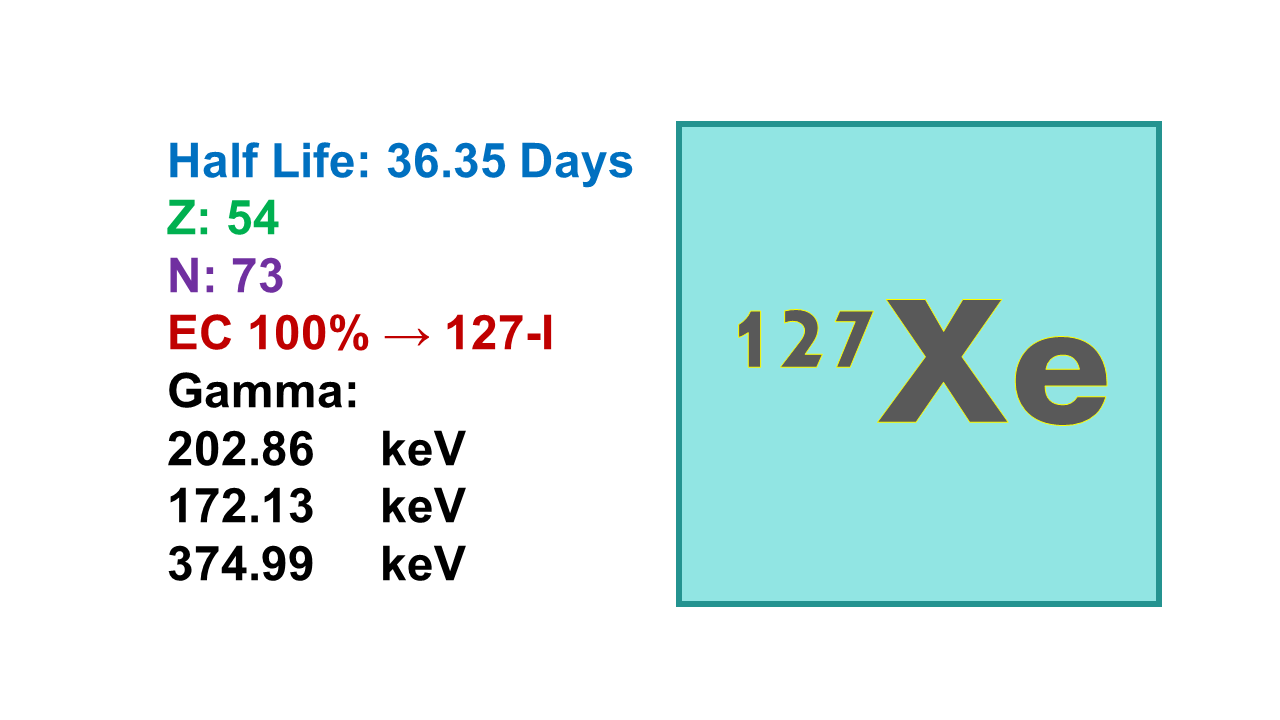
Xenon-127 (127Xe)
February 5, 2024
Properties:
Xenon-127 (127Xe) is a radionuclide with a half-life of 36.4 days emitting gammas (203 keV, 68%; 172 keV, 26%; 375 keV, 17%) and betas (460 keV, 52.7% and 287 keV, 47.3%) and decaying into stable 127I. It is used in the gas form only.
Manufacturing:
127Xe can be produced by cyclotrons at about 10–12 MeV following the route [127I(p,n)127Xe]. It can also be prepared by irradiation of 133Cs with high-energy protons [133Cs(p,xn)127Xe] at about 50 MeV. A 70 MeV would also be well suited for the production of 127Xe. For a gas target of 6g/cm² thickness at 70 MeV the yield has been measured to be 19MBq/µAh through the reaction [natXe(p,xn)127Cs]→127Cs. 127Cs half-life (6.25 h) decays in 127Xe (100% with β+ emission) allowing a potential daily production at Ci levels with high energy cyclotrons.
Source and availability:
127Xe is not readily available but some centers such as ORNL produce small amounts (BLIP produced 127Xe between 1972 and 2000 on the basis of the [133Cs(p,xn)127Xe] reaction in bathes of 1.6 Ci after 8d irradiation). At a certain time 127Xe was proposed to replace 133Xe for the same applications (lung imaging) as it has a higher resolution. The overall interest remained low.
Derivatives:
Due to the inert properties of Xenon, this product cannot be used embedded in an organic molecular structure and its only applications are in the gas form in lung imaging.
Price:
Not available. As this tracer is not routinely available, its price is definitely much higher than the price of 133Xe.
Issues:
- Limited applications.
- Its long half-life is the major disadvantage compared to 133Xe.
Comments:
127Xe is a product with limited applications and limited potential. It is not available on a routine basis anymore. 127Xe was commercially displaced by 99mTc labeled aerosols but would keep an advantage over 133Xe as lung radiation dose is 6-fold lower than that delivered by 133Xe.